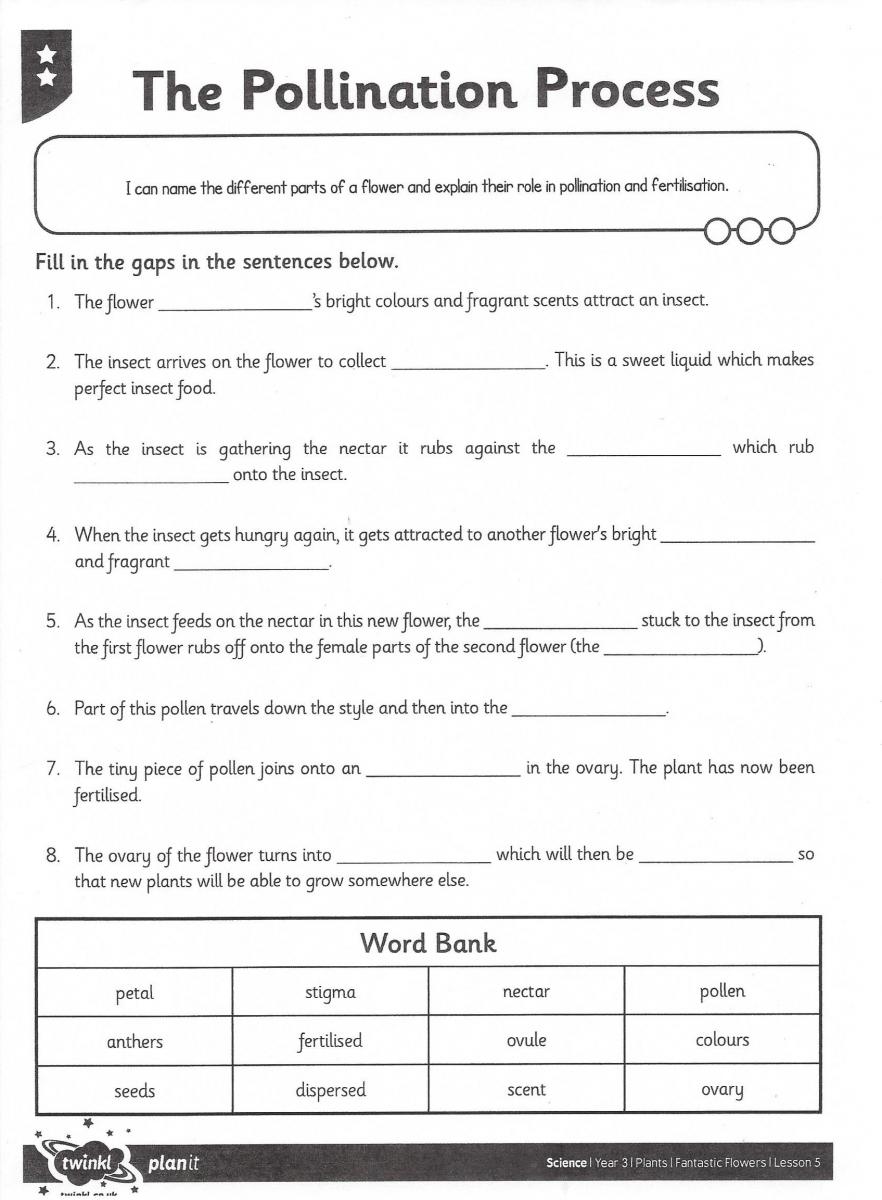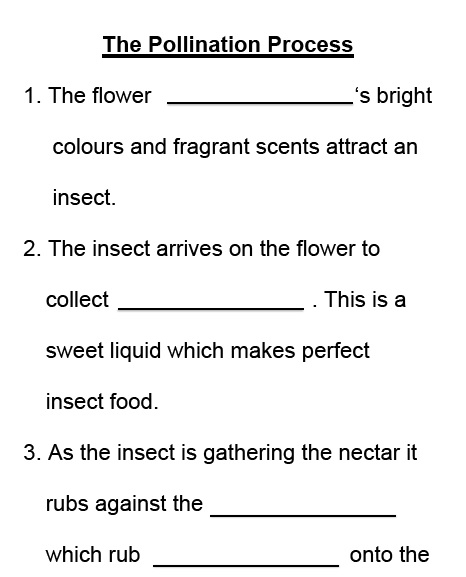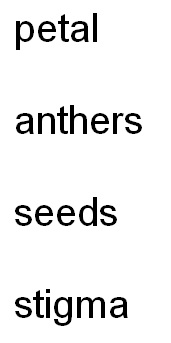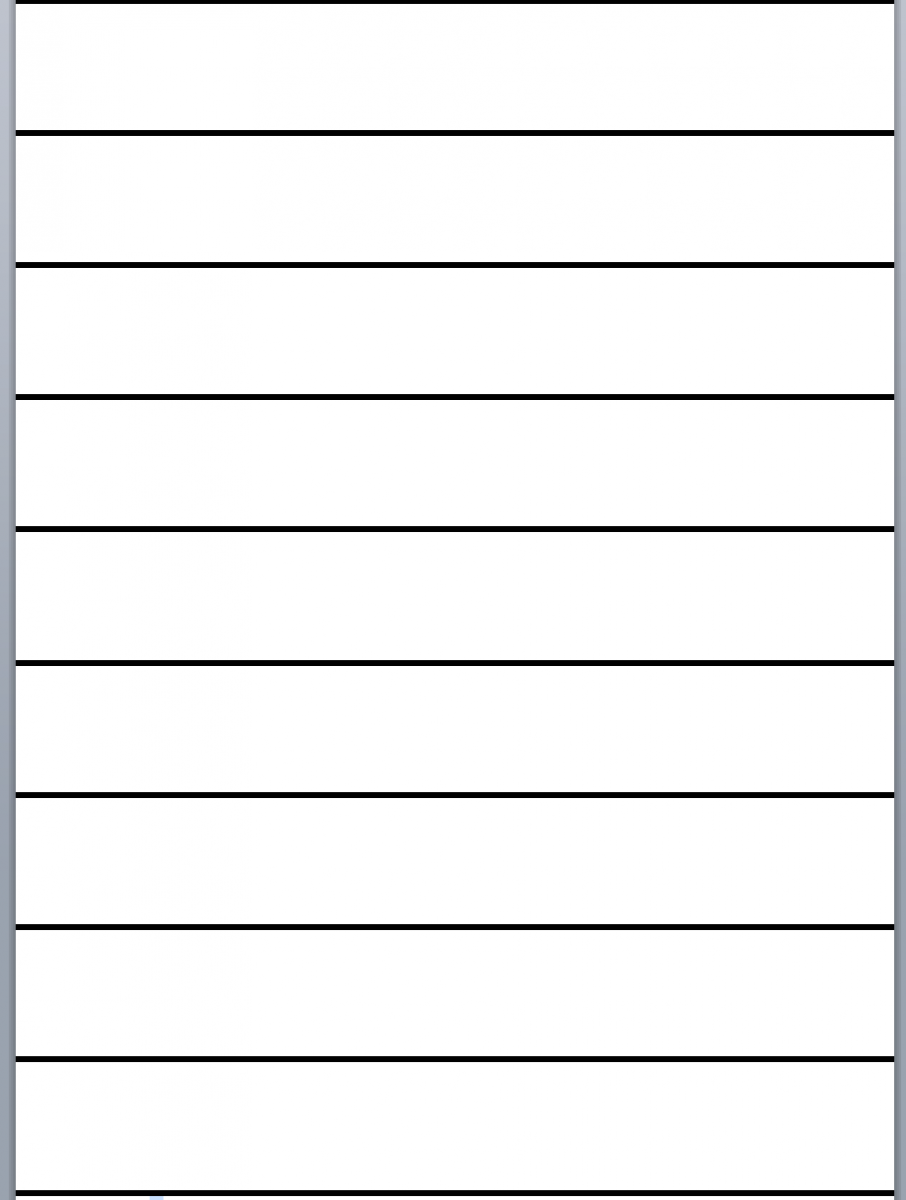Adapting Pollination Process Worksheet
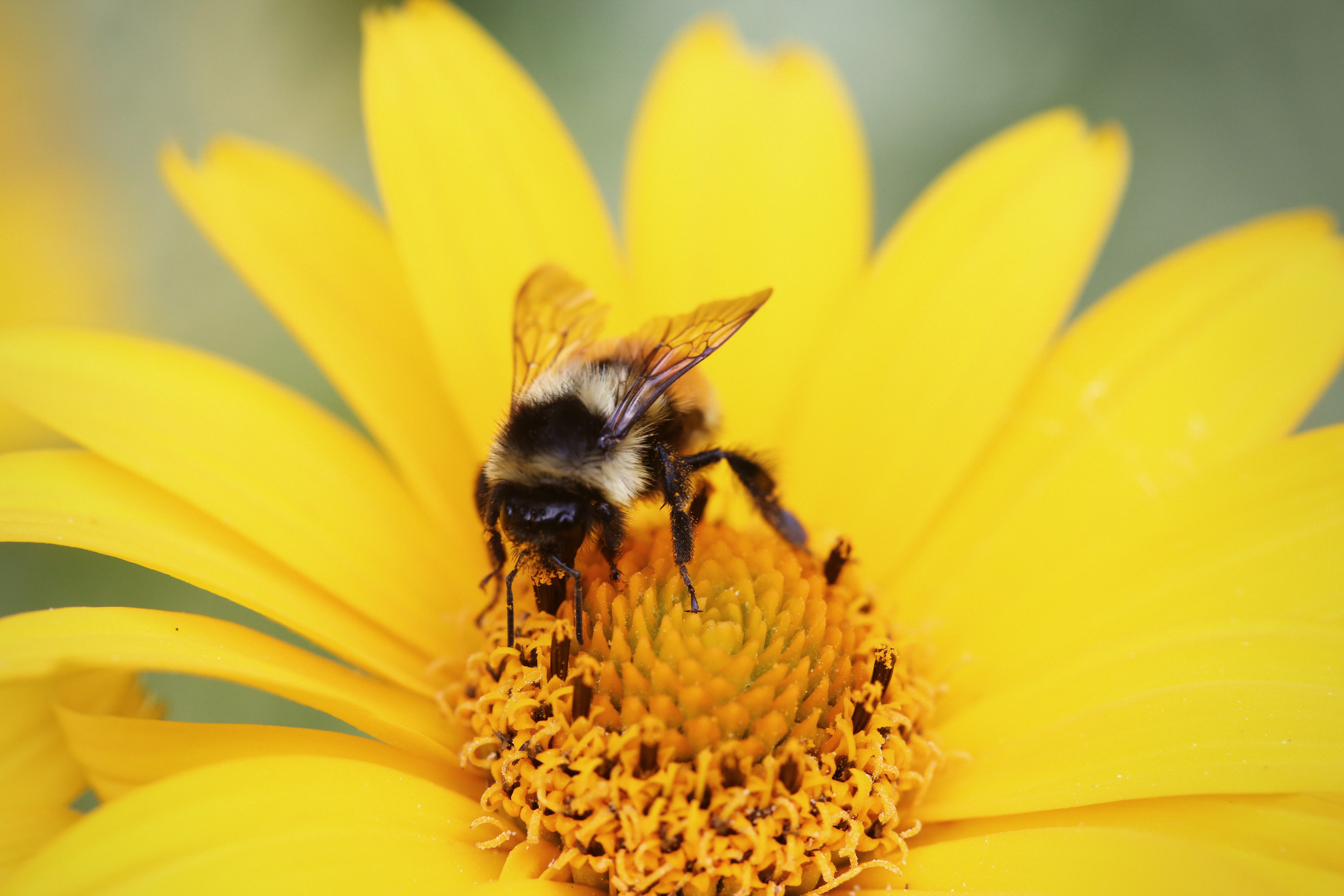
This strategy is part of a series on Adapting Worksheets. Please see the introductory post for an overview of adapting worksheets for students who are blind or visually impaired.
Thought Process in Adapting Worksheet
This worksheet is ideal as the learning objective is clearly stated underneath the title. The pupil must show that they can name the different parts of a flower and explain their role in pollination and fertilisation.
For a sighted pupil, I have removed unnecessary text and clutter, used font size 28 as an example and left enough space between lines (2.0 spacing) for the pupil to either write the missing word, write the number that correlates with the missing word, or place the correct word card in the gap. I have kept the word bank as a list rather than being in a table to make it clearer, but a specific pupil may prefer a table.
For a non-sighted braille user I would consider that this is quite a lot of text, I would think about condensing the amount of sentences if possible, or having an audio version of it and ask them to state the missing word. As an example I have brailled a few sentences and some braille cards for the pupil to place in the gaps. Since the objective is to name the different parts of a flower I would also consider having a real flower, or model of one for the pupil to feel and attempt to name the parts and discuss their function as an alternative to the written task or additionally to reinforce understanding. Again, I would try to gather real objects to assist with this understanding such as petals, seeds, nectar and pollen. You could also have a variety of real flowers to smell to ensure the pupil understands that flowers differ.
Adapting the Worksheet
The original worksheet is on the left and the first page of the adapted worksheet with large print is on the right.

